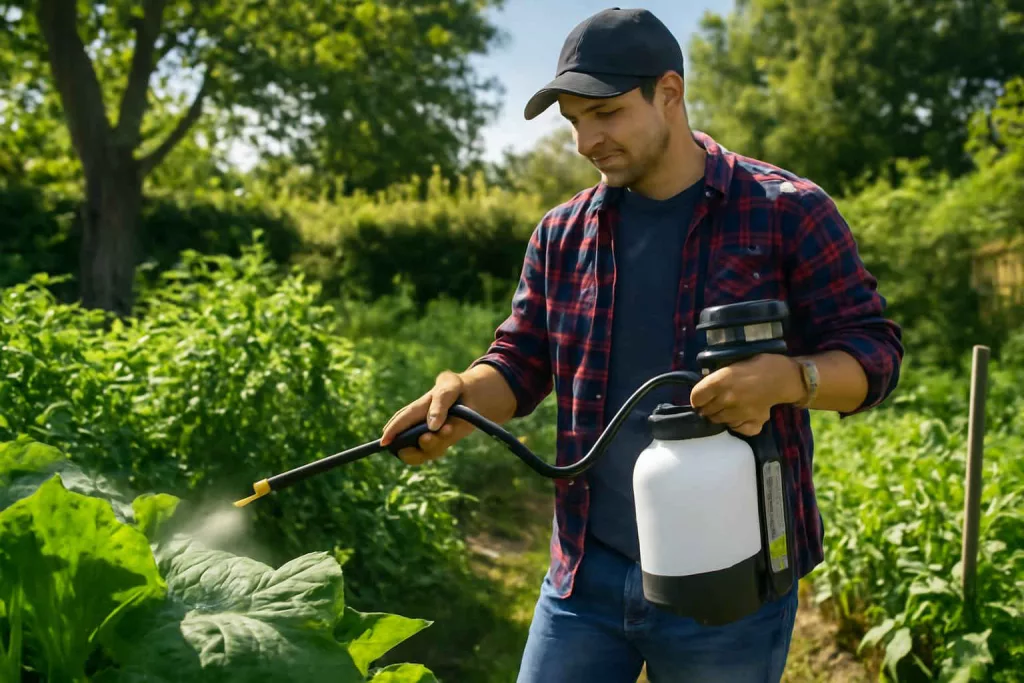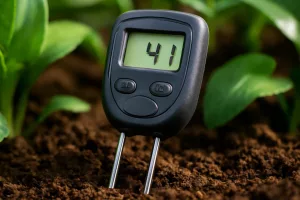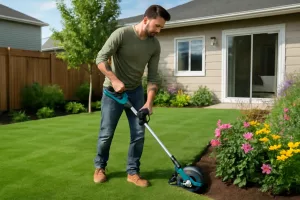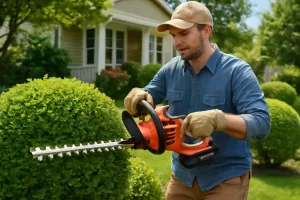When it comes to efficient pest control and plant care, a cordless electric garden sprayer can be a game-changer. Forget the hassle of manual pumping or tangled extension cords. A battery-powered garden sprayer offers mobility, even pressure, and consistent performance—perfect for busy homeowners maintaining lawns, flower beds, and vegetable patches. Whether you’re dealing with stubborn weeds, insect infestations, or applying foliar nutrients, the right sprayer can save time and effort while delivering precise coverage.
In this guide, we’ll explore the key factors to consider before buying a cordless electric garden sprayer, review the top five models on the market, share maintenance tips to extend the life of your sprayer, and offer safety advice to keep you and your plants protected. Ready to upgrade your garden toolkit? Let’s dive in and find the best cordless electric garden sprayer for your needs. If you’re ready to shop, check out the latest battery-powered sprayers on Amazon here: cordless electric garden sprayer.
Key Features to Consider Before Buying
Tank Capacity and Material
A balance between capacity and weight is crucial. Smaller tanks (1–2 gallons) are lighter and easier to carry but require more frequent refills. Larger tanks (3–4 gallons) reduce refill stops but add weight. Look for corrosion-resistant materials like polyethylene or stainless steel, which stand up to acidic pesticides and fertilizers. An ergonomic carrying strap or backpack design helps distribute weight evenly, preventing shoulder strain during long spraying sessions.
Battery Life and Power Output
Battery capacity (measured in ampere-hours, Ah) directly affects runtime. Most cordless garden sprayers use 18V to 24V lithium-ion batteries, providing 1.5 to 3 hours of continuous use. Consider spare batteries if you have a large garden. Consistent pressure output (20–40 PSI) ensures even spray patterns. Some models offer adjustable pressure settings to switch between misting delicate plants and blasting weeds with a more powerful stream.
Nozzle Types and Versatility
A versatile sprayer includes interchangeable nozzles: fan, cone, and jet. Fan nozzles deliver a wide, even mist for foliar feeding, while cone nozzles provide targeted coverage for shrubs. Jet nozzles handle tougher tasks like cleaning garden furniture or washing down patios. Quick-connect nozzles simplify switching between settings. If you’ll use your sprayer for multiple tasks, look for kits that include a range of nozzle tips.
Pump Mechanism and Pressure Control
Electric diaphragmatic pumps are common in cordless sprayers for their self-priming and consistent pressure. Check if the pump has built-in pressure relief valves to prevent over-pressurization. A digital pressure gauge and one-touch control simplify adjustments. Some advanced models feature automated spraying with programmable intervals, reducing hand fatigue during extended use.
Build Quality and Durability
Garden equipment faces tough conditions—sunlight, moisture, chemicals, and drops. Choose sprayers with reinforced frames and UV-resistant plastic parts. Metal reinforcement around the pump and wand prevents bends or breaks. Easy-access filters protect the pump from debris and prolong lifespan. Read user reviews to identify models known for reliability and minimal maintenance issues.
Ergonomics and Portability
Weight distribution and handle design impact user comfort. Backpack-style sprayers distribute load across both shoulders, while handheld units prioritize maneuverability for light tasks. Some handheld models weigh under 5 pounds, ideal for container gardening or small flower beds. Examine how grips, straps, and wand lengths feel in your hand to minimize fatigue. Lightweight but robust designs let you navigate tight corners and dense foliage.
Interested in other battery-powered tools? For trimming hedges with cordless convenience, explore our guide to best cordless electric hedge trimmers. And if edging your lawn is next, check out our review of battery-powered lawn edgers for crisp borders.
Top 5 Cordless Electric Garden Sprayers for 2024
1. Solo 465 18V Cordless Sprayer
The Solo 465 model is a popular choice for homeowners seeking professional-grade performance. It features a 2.6-gallon tank, an 18V lithium-ion battery delivering up to 2 hours of run time, and an adjustable nozzle with five spray patterns. The backpack design offers padded straps and a ventilated back panel. The self-cleaning suction filter prevents clogs, and the pressure release valve ensures safe operation. MSRP: around $229.
Check real-time pricing and reviews: Solo 465 battery garden sprayer.
2. Chapin 97314 18V Lithium Sprayer
Chapin’s 97314 model features a 2-gallon translucent tank and quick-connect extension wand. The 18V battery supports continuous operation up to 1.5 hours. Adjustable pressure ranges from 15 to 50 PSI, accommodating spot treatments or broad coverage. The durable pump housing stands up to harsh chemicals, and the LED battery indicator prevents surprises mid-task. Weight: 8.8 pounds (with battery).
Learn more: Chapin 97314 electric garden sprayer.
3. Ryobi ONE+ 18V Sprayer
Compatible with Ryobi’s ONE+ battery system, this sprayer integrates seamlessly if you own Ryobi tools. It boasts a 1.6-gallon tank, variable spray patterns, and an ergonomic handle. The 18V battery (sold separately) affords about 1 hour of use. At 7 pounds without battery, it’s ideal for small to medium gardens. The chemical-resistant tubing and corrosion-proof fittings add longevity.
Find it here: Ryobi ONE+ garden sprayer.
4. Hikeren 20V Cordless Sprayer Backpack
Hikeren’s 20V model raises power with a 4.0Ah battery offering up to 3 hours of spray time. The 3-gallon tank suits large yards and orchards. The four nozzle tips cover fan, mist, cone, and jet modes. Extra-long 24-inch extension wand and padded backpack straps ensure comfort. A detachable wand holder on the tank simplifies transport.
Shop now: Hikeren 20V cordless sprayer.
5. Claber Akku 15V Cordless Sprayer
Claber’s Italian-made sprayer features a 1.6-gallon tank and a 15V 2.0Ah battery good for around 90 minutes. The compact design weighs only 7 pounds fully loaded. The adjustable nozzle and two wand lengths (24″ and 36″) provide versatile reach. Its intuitive control panel includes a pressure gauge and battery level indicator.
Check availability: Claber Akku cordless sprayer.
Maintenance Tips for Longevity
Drain and Clean After Each Use
Leftover chemicals can corrode internal parts and clog nozzles. After spraying, fill the tank with clean water and run the sprayer until empty. Remove the wand and nozzles, rinse thoroughly, and use a soft brush for stubborn debris. Proper cleaning prevents damage to seals and ensures consistent performance.
Inspect Hoses and Fittings Regularly
Leaks reduce pressure and waste solution. Examine hoses, connectors, and pump housing for cracks or wear. Tighten loose fittings, and replace damaged hoses immediately. Keep spare O-rings and hose clamps on hand for quick fixes.
Store Batteries Separately
Remove batteries before storage. Store them in a cool, dry place—away from direct sunlight and moisture. Charge batteries to about 50% if the sprayer will be idle for months. This practice preserves battery health and extends overall lifespan.
Lubricate Moving Parts
A few drops of silicone-based lubricant on trigger mechanisms and pump shafts every few months keeps operation smooth. Avoid petroleum-based lubricants, which can degrade plastic seals. Follow manufacturer guidelines for specific lubrication points.
Safety Tips When Using Electric Garden Sprayers
Wear Protective Gear
Pesticides and fertilizers can irritate skin, eyes, and respiratory system. Always wear chemical-resistant gloves, goggles, and a mask or respirator rated for organic vapors. Long-sleeved shirts and pants add an extra barrier. If you’re spraying near food crops, choose appropriate shields and follow label directions.
Mix Chemicals Safely
Never mix multiple chemicals unless specified by the manufacturer. Use dedicated measuring tools, and add chemicals to water—not the other way around—to prevent splashes. Label the sprayer tank if you use different solutions to avoid cross-contamination.
Operate in Calm Conditions
Avoid spraying on windy days to reduce drift onto non-target plants, pets, or neighbors’ yards. Early morning or late afternoon offers calmer air and less sun evaporation. Check local regulations for restricted chemicals and adhere to application rates and intervals.
Conclusion
A quality cordless electric garden sprayer can transform your pest control and plant care routine, offering convenience, power, and precision. From small balcony gardens to acreage landscapes, the right model balances capacity, battery life, and durability. Evaluate your garden size, preferred spray patterns, and existing battery platforms when choosing. Weigh the top five models above, and consider ongoing maintenance and safety best practices to maximize performance and lifespan.
Ready to make your purchase? Find the ideal cordless electric garden sprayer on Amazon now: shop cordless electric garden sprayers.






